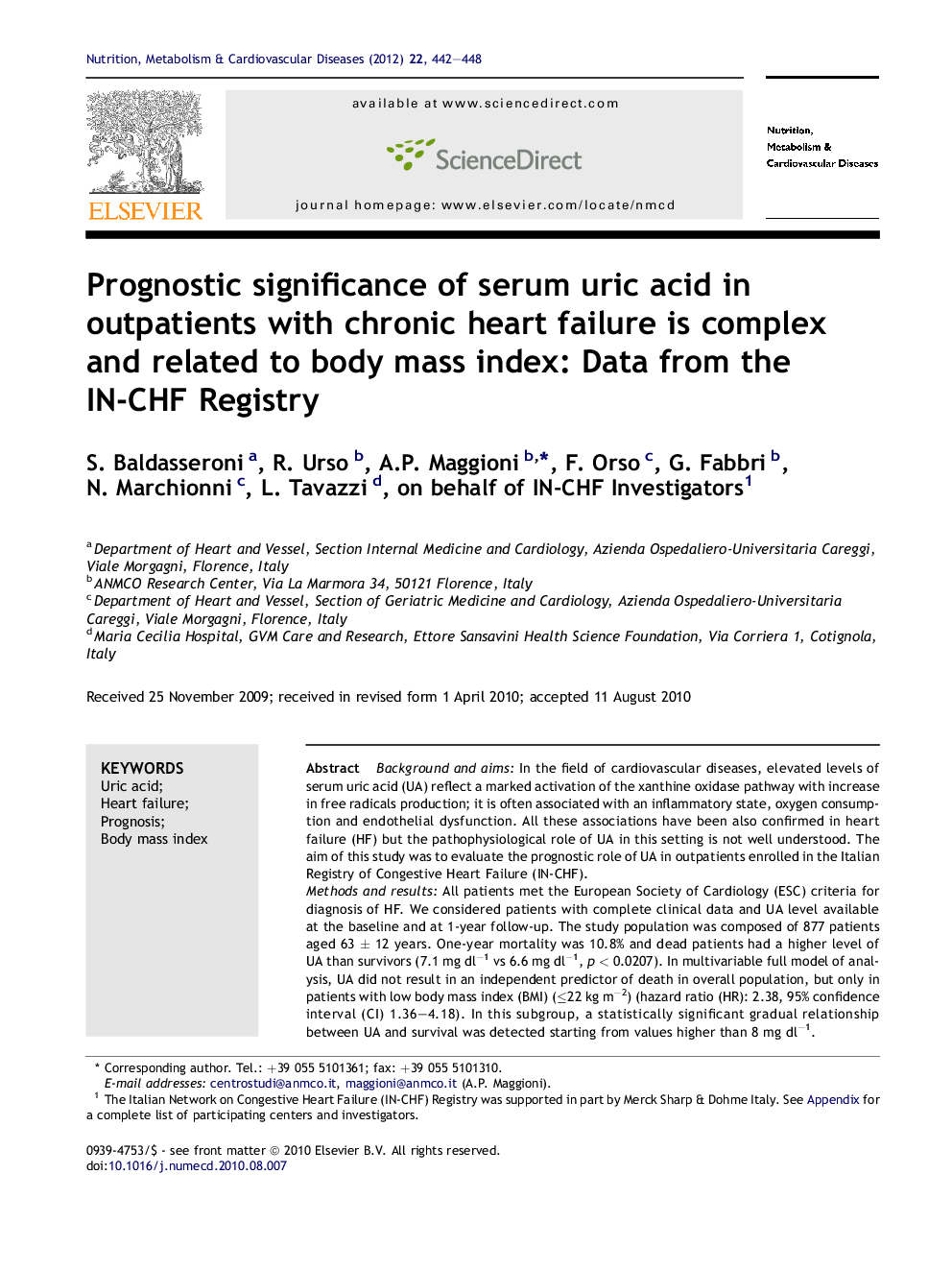| Article ID | Journal | Published Year | Pages | File Type |
|---|---|---|---|---|
| 3002565 | Nutrition, Metabolism and Cardiovascular Diseases | 2012 | 7 Pages |
Background and aimsIn the field of cardiovascular diseases, elevated levels of serum uric acid (UA) reflect a marked activation of the xanthine oxidase pathway with increase in free radicals production; it is often associated with an inflammatory state, oxygen consumption and endothelial dysfunction. All these associations have been also confirmed in heart failure (HF) but the pathophysiological role of UA in this setting is not well understood. The aim of this study was to evaluate the prognostic role of UA in outpatients enrolled in the Italian Registry of Congestive Heart Failure (IN-CHF).Methods and resultsAll patients met the European Society of Cardiology (ESC) criteria for diagnosis of HF. We considered patients with complete clinical data and UA level available at the baseline and at 1-year follow-up. The study population was composed of 877 patients aged 63 ± 12 years. One-year mortality was 10.8% and dead patients had a higher level of UA than survivors (7.1 mg dl−1 vs 6.6 mg dl−1, p < 0.0207). In multivariable full model of analysis, UA did not result in an independent predictor of death in overall population, but only in patients with low body mass index (BMI) (≤22 kg m−2) (hazard ratio (HR): 2.38, 95% confidence interval (CI) 1.36–4.18). In this subgroup, a statistically significant gradual relationship between UA and survival was detected starting from values higher than 8 mg dl−1.ConclusionElevated level of UA is not an independent predictor of mortality in chronic HF, but it markedly worsens outcome if associated with low level of BMI. This association is likely an indicator of chronic inflammatory and catabolic state.
